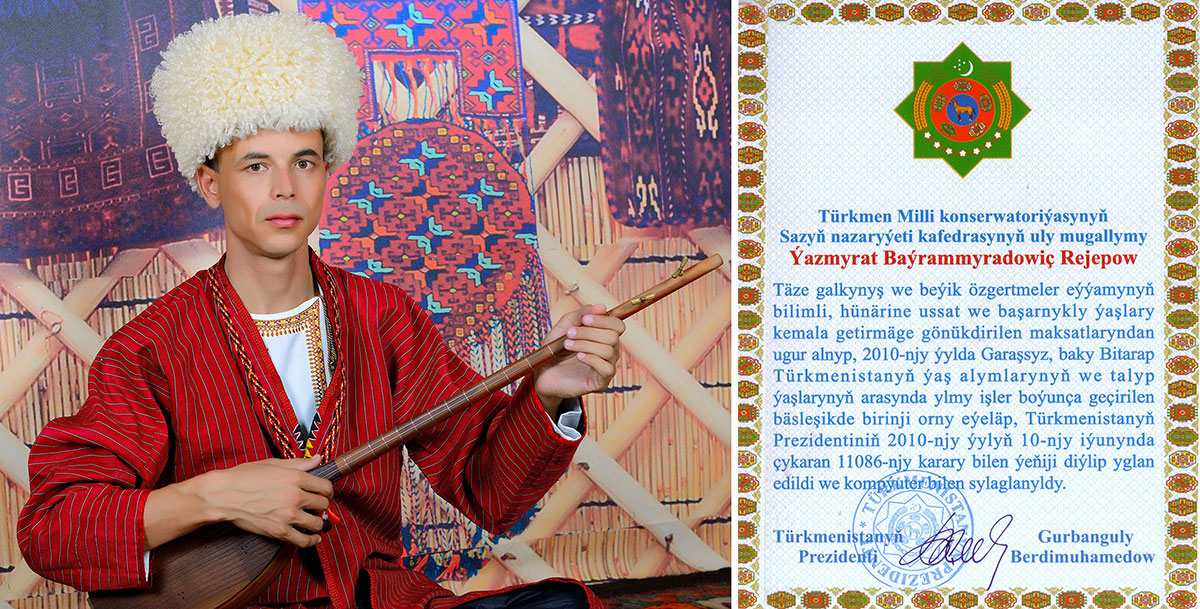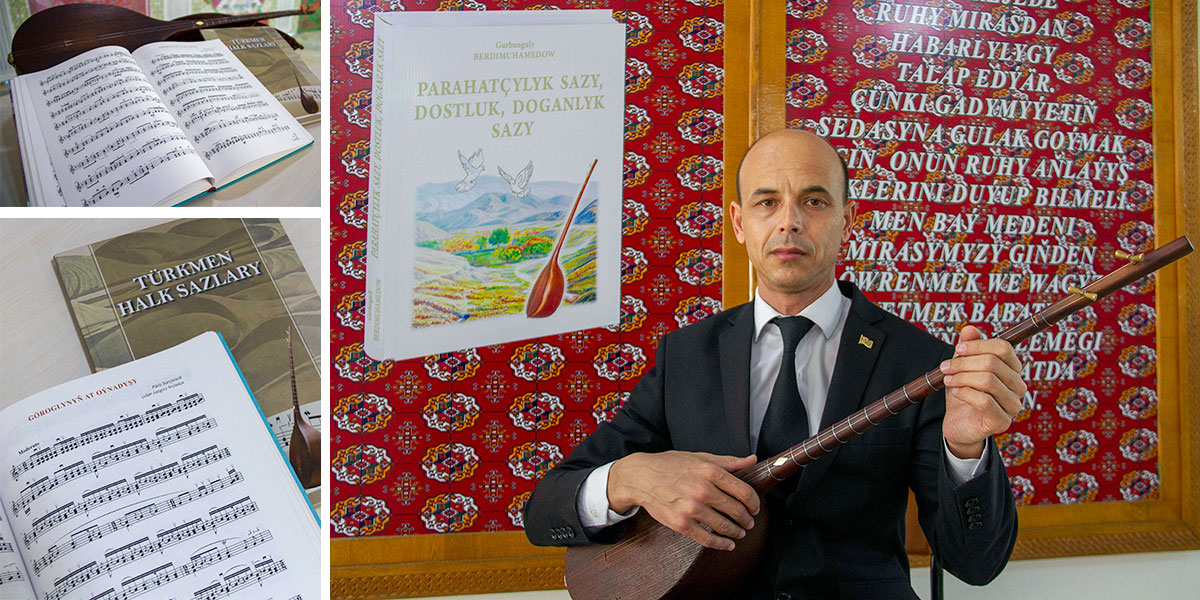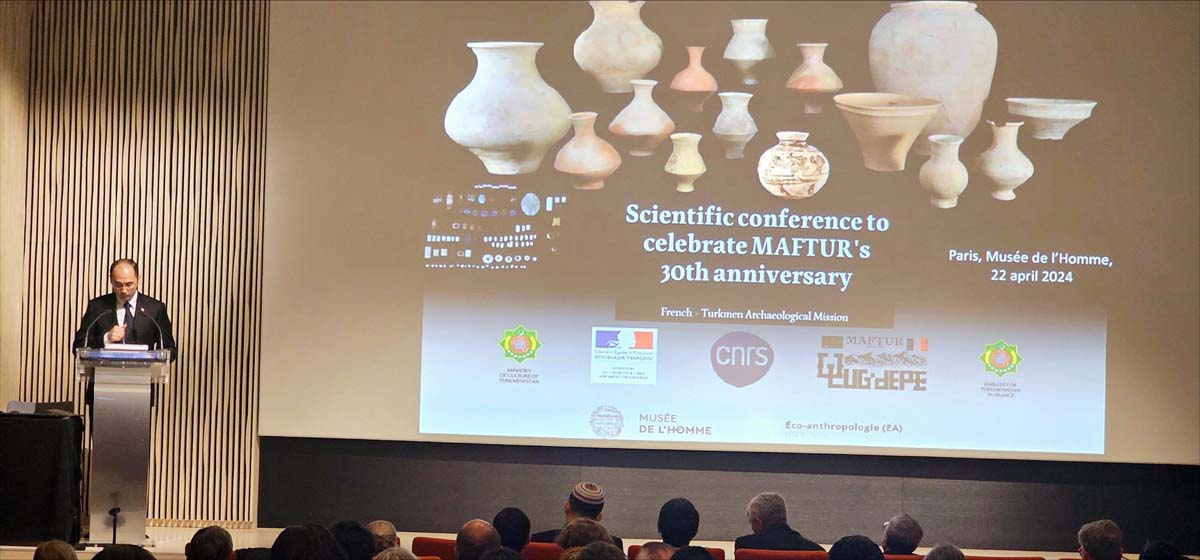When two books authored by Yazmurat Rejepov, a pro-rector for creative work and research at the Maya Kulieva Turkmen National Conservatory, came out one by one, his colleagues said he had followed in Victor Uspensky’s footsteps. In 1925-1928, Victor Uspensky and his close associate Victor Belyaev collected , transcribed and notated traditional Turkmen folk songs and melodies for the dutar, gijak and tuiduk, traveling all over Turkmenistan. As the two enthusiasts were short of time, they wrote down the melodies in short variants. However, the book, which was published later, has proved invaluable to new generations of musicians.
Almost 80 years later, the State Publishing Service of Turkmenistan published a book titled “Dutar Sazlary” (Dutar Melodies) by Yazmurat Rejepov. It features 45 deciphered melodies played by celebrated performers, such as Mylly Tachmuradov, Purli Saryev, and Chary Tachmamedov. The book is divided into two parts: large, cyclic multipartite compositions, and popular folk songs.
When the outstanding composer Rejep Rejepov, whom we sadly lost a short time ago, had read the book, he said: “Yazmurat, you have immortalized your name forever by this book”.
– My book, the author told, was approved and ready for printing in late December of 2015. When I learned that 2016 had been designated as the Year of Honoring Heritage, Transforming the Motherland, I devoted my book to the slogan of 2016 perfectly befitting the book’s subject.
The second book called “Türkmen Halk Sazlary” (“Turkmen Folk Melodies”) includes 33 music pieces. Notably, in addition to the works, which were played by the three famous performers mentioned in the first book, it also features the pieces by Jepbarberdi Khansakhatov.
One of the melodies, presented in the book is “Baga Giremi” (“Let’s Go to the Garden”). There is a real-life incident associated with the song. It happened to the talented dutar player Mylly Tachmuradov in 1950s. Once, his wife Ogulnabat-eje, who listened to the radio every day, congratulated her husband on his return from work: “I have never heard you play “Baga Giremi” so wonderfully well like today!” “You are mistaken, my dear, one of my best pupils, Jepbarberdi Khansakhatov, played the piece today”, the mentor said proudly.
Interestingly, the book also contains a notated melody from the destan “Haji Golak” (“Armless Haji”). Its main character, Haji Golak, is an unrivalled dutar player. Once, the khan heard Haji Golak’s rendition and was consumed with envy. He ordered to cut off the performer’s arms because he wanted to remain the best dutar player. Purli Saryev, who told this shocking story through the music he played on the dutar, is no less brilliant than Haji Golak.
As these two stories show, music performed by musicians can fill good people with admiration, and arouse extreme envy in bad people, making them commit crimes. Musicians who perform beautiful music leave no one indifferent.
The book boasts wonderful pieces such as “Humarala” from Mylly Tachmyradov’s repertoire, “Tüni Derýa” (Tuni River) included in the repertoire of Chary Tachmamedov, “Näler Goründi” (“I See a Miracle”), “Ýar Derdinden” (“Missing My Sweetheart”), and “Girmyzy” from Purli Saryev’s repertoire, and many others.
– My works are intended for instrumentalists and music experts, Yazmurat Bairammuradovich said in an interview. I believe they will become indispensable reference books for students of music schools and conservatories.
– Will there be a continuation?
– Yes, certainly. I hope the third book, which is similar to the first two, will be made available to all those interested this year.
Tamara GLAZUNOVA
Photo: Aleksey GIMALITDINOV








